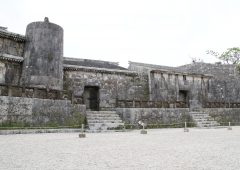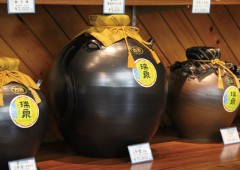2013.04.26
Okinawa, Tokyo split on need for sovereignty ceremonies
The Japanese government in Tokyo and the Okinawa Prefecture remain wide apart over a state-sponsored ceremony on April 28th to celebrate the 61st anniversary of the country’s restoration of sovereignty after its defeat in World War II.
Since Okinawa was kept under U.S. control even after the April 28, 1952 effectuation of the San Francisco Peace Treaty, which ended the postwar occupation of Japan by the Allied Powers, people in the prefecture are strongly opposed to the central government’s decision to mark the day with celebration. In the prefecture, April 28th has long been remembered as the day of humiliation, with many people thinking Okinawa was abandoned by the Japanese government on that day in 1952.
On March 29th the Okinawa Prefectural Assembly unanimously passed a resolution protesting against the coming ceremony, which will be held in Tokyo. On the back of the local people’s strong resentment against the event, Okinawa Governor Hirokazu Nakaima decided not to attend the ceremony but instead to send Vice Governor Kurayoshi Takara on his behalf.
Takeshi Noda, chief of the ruling Liberal Democratic Party’s tax panel who led the party’s move to hold the ceremony, stressed the significance of the April 28th event. “It is important for the Japanese people to review why the country went to the war, why it was defeated and how it was governed during the occupation period,” Noda said. In its campaign platform for the House of Representatives election in December last year, the LDP, which was then the biggest opposition party, included plans to hold the ceremony, the first such event ever, on April 28th to remember Japan’s recovery of sovereignty.
After the party ousted the Democratic Party of Japan from power in the election, the government of Prime Minister Shinzo Abe, also LDP leader, made a decision on the event at a cabinet meeting on March 12th. The Amami islands, which belong to Kagoshima Prefecture, southern Japan, and the Ogasawara islands, located some 1,000 kilometers south of Tokyo, were also kept under U.S. control after the San Francisco treaty took effect.
For people in Okinawa, however, it is emotionally difficult to accept the sovereignty ceremony, because its reversion to Japan took longer than the return of the two island chains and the U.S. military presence in Okinawa remains heavy. The Amami islands were returned in 1953, the Ogasawara islands in 1968 and Okinawa in 1972.
Traffic and other accidents and crimes involving U.S. servicemen have been frequent in Okinawa. Yet, Abe is believed to have decided to hold the April 28th ceremony to demonstrate Japan’s uncompromising stance over sovereignty and territorial issues, informed sources said. Japan has a territorial spat with China over Senkaku Islands in the East China Sea, with South Korea over Sea of Japan islands, and with Russia over northwestern Pacific islands.
In an effort to better publicize the legitimacy of Japan’s position on the territorial issues both nationally and internationally, the Abe government set up an office in charge at the cabinet secretariat in February. A government panel of experts tasked with a similar mission was launched on Tuesday. China, South Korea and Russia are increasingly jittery over the Japanese government moves. It therefore remains to be seen whether the prime minister’s efforts will produce intended effects.

 2024.07.07
2024.07.07 2024.06.21
2024.06.21 2024.05.15
2024.05.15 2024.02.07
2024.02.07 2024.01.31
2024.01.31 2023.11.02
2023.11.02 2023.10.26
2023.10.26 2023.09.29
2023.09.29 2023.09.01
2023.09.01






